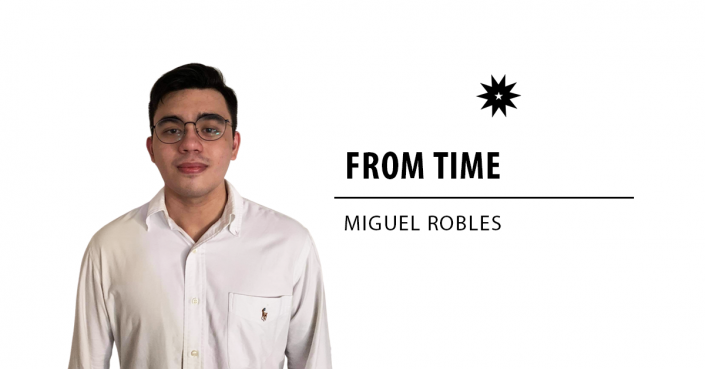
Physicality, passion, and intensity—these are all evident in every sport around the globe, especially in highly competitive environments. Athletes have different ways of getting locked in or switching gears during games. Some prefer to play more physically by exhausting hustle in every play—diving for loose balls or running that extra mile just to make a difference. They endure different bumps and bruises, which are all part of the game.
This kind of intensity gives birth to competitive trash talk, which is often accepted as an element that fuels athletes—as long as the conversation remains respectful. However, there are instances wherein players lose their cool and verbally get into altercations with their opponents and opposing fans. Due to the heated verbal and physical intensity of the game, some athletes end up getting into fights on the court.
This was the case last November 8, when the De La Salle-College of St. Benilde (CSB) Blazers faced off against the Jose Rizal University (JRU) Heavy Bombers in season 98 of the Men’s Basketball Tournament of the National Collegiate Athletic Association (NCAA) of the Philippines.
In a contest that was decided with over three minutes left, CSB was up by 20 until all hell broke loose. JRU Heavy Bomber John Amores seemed to get into a verbal altercation with a fan from the stands. According to officials, two fans “admitted foul gestures and language” toward the JRU forward, to which his team tried to calm him down to prevent any further escalation. Unfortunately, Amores launched himself into the CSB bench as punches were thrown from both sides in response to Heavy Bomber’s charge–highlighted by Amores’ punching spree on multiple CSB players—even to those who were trying to de-escalate the situation.
To avoid added commotion between both teams, the league’s management decided to halt the game and award the victory to CSB. The madness, however, did not stop there. As the footage went viral on social media and became the hottest topic in the local sports scene, I came across multiple posts calling for Amores’ immediate suspension. Many sports fans and personalities expressed their disgust toward the incident, while others questioned how JRU garnered a league sportsmanship award back in 2018 with none other than Amores pictured receiving the trophy.
As of writing, Amores has been slapped with an indefinite suspension from both JRU and the NCAA, banning him from playing for the rest of the season. Meanwhile, other CSB players received one- and two-game suspensions for participating in the brawl. Three days after the incident, Blazers Taine Davis and Jimboy Pasturan filed charges against Amores after suffering injuries from the frenzied encounter.
This isn’t the first time that Amores dealt with a similar issue. Back in July, in a Universities and Colleges Basketball League (UCBL) game, Amores also threw punches after an in-game physical entanglement with University of the Philippines (UP) Fighting Maroon Mark Belmonte, as the latter endured a “gum fracture, teeth dislocation, and mouth lacerations.” Renan Dalisay, a backer of the UP Fighting Maroons, revealed that nowhere to go but UP, a UP volunteer group, previously filed criminal charges against the Heavy Bomber. Despite dealing with an ongoing case and suspension from the UCBL, Amores was eligible to suit up in the NCAA this season.
Together with many sports fans, I wonder: How on earth is a student-athlete with tendencies to inflict harm able to compete in one of the premier collegiate leagues in the country?
During the opening ceremonies of both the NCAA and the University Athletic Association of the Philippines (UAAP), all athletes undergo an oath of sportsmanship that stresses a promise to play fairly and respectfully throughout the season. It is quite disheartening for sports fans to witness immature acts such as these, knowing that the NCAA has a nationwide audience. Children across the country look up to these individuals, with hopes of one day becoming student-athletes themselves. Surely, this incident doesn’t serve as a good example to any aspiring athlete.
I recognize that contact sports such as basketball initiate heated moments between the fans, coaches, and players. Even if the game exudes passion and adrenaline, spectators should always remain respectful to all athletes on the court. And although some fans may cross the line, athletes should know that violence will never serve as the proper response to disrespectful behavior.
All collegiate sports associations and participating schools should keep in mind that these players are students first. They should be in charge of making sure that their players possess the right character to compete without causing unnecessary antics. Alas, the university must take the necessary internal disciplinary steps to ensure that their student realizes the weight of his actions.
Amid the buzz surrounding the issue, people should realize that as much as Amores deserves to receive a punishment, he needs help too. This incident serves as an indication for JRU to dig deep into knowing the mental state of their student-athletes. They should aid Amores in possibly receiving anger management treatment or various care regarding the forward’s mental health as well. Apart from making sure that student-athletes are in peak physical condition, teams must always ensure that their players are mentally stable to endure any kind of heat during games.
From the courts of streetball up to the brightest lights of the nation’s highest competitive scene, inflicting harm upon others goes beyond any unsportsmanlike foul or red card—it should never be welcomed on any playing field.
